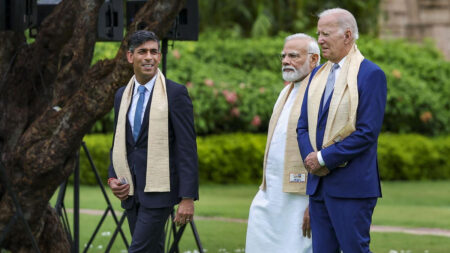The ministry’s opposition comes after WHO issued a report suggesting that India had 4.7 million COVID fatalities – ten times the official figure and nearly a third of all COVID deaths globally.

India expressed strong opposition to the World Health Organization’s (WHO) approach for projecting excess mortality estimates connected to COVID-19 using mathematical models, claiming that the models’ validity and robustness are dubious.
The Ministry of Health and Family Welfare stated that the data released by the Registrar General of India (RGI) through the Civil Registration System (CRS) is valid and reliable for projecting excess mortality rates in India. “The Civil Registration data, as well as the yearly Sample Registration data published by RGI, have been accessed by a great number of researchers, policymakers, and scientists both locally and internationally,” the ministry stated in a statement.
The ministry’s opposition comes after WHO issued a report suggesting that India had 4.7 million COVID fatalities – ten times the official figure and nearly a third of all COVID deaths globally. According to the WHO research, approximately 15 million people have died either directly or indirectly as a result of the coronavirus or its impact on overburdened health systems during the last two years. According to the WHO study, the majority of fatalities occurred in Southeast Asia, Europe, and the Americas.
Underscoring the authenticity of RGI data, the health ministry stated that “based on reports submitted by states/UTs, National reports – Vital Statistics of India based on Civil Registration System (CRS) are published annually by the Registrar,” adding that “such robust and accurate data generated through a Member State’s legal framework must be respected, accepted, and used by WHO rather than relying on less-than-accurate mathematical projections based on non-official data.”
India also expressed dissatisfaction with the WHO’s assumptions for classifying nations into Tier I and Tier II, and questioned the basic premise for classifying India as a Tier II country. “India is not deserving of being classified as a Tier II country.” the ministry stated. WHO has not yet reacted to India’s allegation.
Additionally, the government criticized WHO’s data gathering tactics, claiming that they were “statistically unsound and scientifically dubious” since they gathered death statistics for seventeen Indian states from various websites and news sources. India objected to the World Health Organization’s (WHO) use of Global Health Estimates (GHE) 2019 in one of the models used to calculate India’s excess death estimates.
“GHE is an approximation. As a result, a modelling method that generates mortality estimates based on another estimate while completely disregarding relevant data in the nation demonstrates a lack of academic rigour,” the statement stated. The test positivity rate for COVID-19 in India – another critical variable used by the WHO – has never been consistent across the country at any point in time.
“Such a modelling method ignores the variety in COVID positive rates across the country, both in terms of area and time. Additionally, the model fails to account for the rate of testing and the impact of various diagnostic procedures (RAT/RT-PCR) utilised in various regions,” the statement noted.
India continuously opposed to the adoption of a “one size fits all” strategy and model, which may be suitable to smaller nations but cannot be applied to India, the ministry said.
Additionally, the administration asserted that trustworthy numbers issued by the Statutory Authority and collected through a “rigorous procedure” across the country are now available for research and policy planning purposes.
Published by: Gargi Sharma
Edited by: Aaradhana Singh













